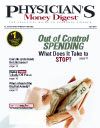Publication
Article
Exchange-traded Funds and How They Work
Since their launch in the early1990s on the American StockExchange, there are now hundredsof exchange-traded funds(ETFs) available for investorsto buy. As the market has struggled itsway back since 2000, investors haveembraced ETFs as a more efficient alternativeto a mutual fund invested in thesame securities. A financial planner cantell you whether ETFs are right for yourportfolio, but here are some details toknow beforehand:
•How are ETFs created? An ETFis created by large institutional investorswho buy stocks aligning with the sharesin a particular index, and then theyexchange those shares—in baskets aslarge as 50,000 shares—for shares in theETF. The redemption process works thesame way in reverse. The institutionalinvestors exchange shares of the ETF forbaskets of the underlying stocks.
•Are all ETFs based on indexes?Yes. Indexes, like the S&P 500 or theHang Seng Index, the primary stockindex of the Hong Kong StockExchange, are a listing of stocks reflectingthe activity of a particularinvestment sector on a stock exchange.One of the first popular ETFs had anunusual nickname, Spiders—a play onits actual name, SPDR, short forStandard and Poor's Depositary Receipts.Newer ETFs track less wellknownindexes, even indexes of bonds,and some ETFs are tracking verydynamic indexes that almost act likeactively managed funds.
•How are ETFs traded? Unlikemutual funds, which have their pricesset at the end of the trading day, ETFsare priced and traded every moment ofthe trading day. That's generally moremeaningful to institutional investorswho buy and sell constantly than longterminvestors who buy and hold. And,unlike mutual funds, ETFs can bebought on margin or sold short.
•Why might ETFs be more taxefficient?Generally, ETFs generatefewer capital gains due to the uniquecreation and redemption process, as wellas the usually lower turnover of securitiesthat comprise their underlying portfolios.Financial planners note thatinvestors can better control the timing ofthe tax treatment of ETFs relative tomutual funds. Most importantly—byholding an ETF for at least 1 year and aday, capital gains will be treated as longtermcapital gains, which are currentlytaxed at a federal rate of 15% (5% forlow-tax-bracket investors).
•Are there other advantages?Unlike traditional mutual funds, whichmust disclose their holdings quarterly,ETF holdings are fully transparent,and investors know what holdings arein the ETF at any given time. Each ETFalso has a NAV (ie, net asset value)tracking symbol for even more preciseanalysis. This helps keep ETFs tradingwithin pennies of their intraday NAV.
•What about fees? Shares ofindex-based ETFs may have evenlower annual expenses than similarindex mutual funds, which, in turn,tend to be lower than those of activelymanaged mutual funds. ETFs must,however, be bought and sold throughbrokers, and those trades do involvetransaction costs. ETFs may prove tobe more expensive than mutual fundsto investors who add money eachmonth to their portfolio.
•What's the downside? Unlikeregular mutual funds, ETFs do notnecessarily trade at the net asset valuesof their underlying holdings.Instead, the market price of an ETF isdetermined by supply and demand forthe ETF shares alone. Usually, theETF value closely mirrors the value ofthe underlying shares, but there'salways a chance for ETFs to trade atprices above or below the value oftheir underlying portfolios. Also,since so many new ETFs are hittingthe market, investors should be awareof the maturity of the particular ETFthey are considering.
Reprinted with permission from the Financial PlanningAssociation (www.fpanet.org), the membership organizationfor the financial planning community.
